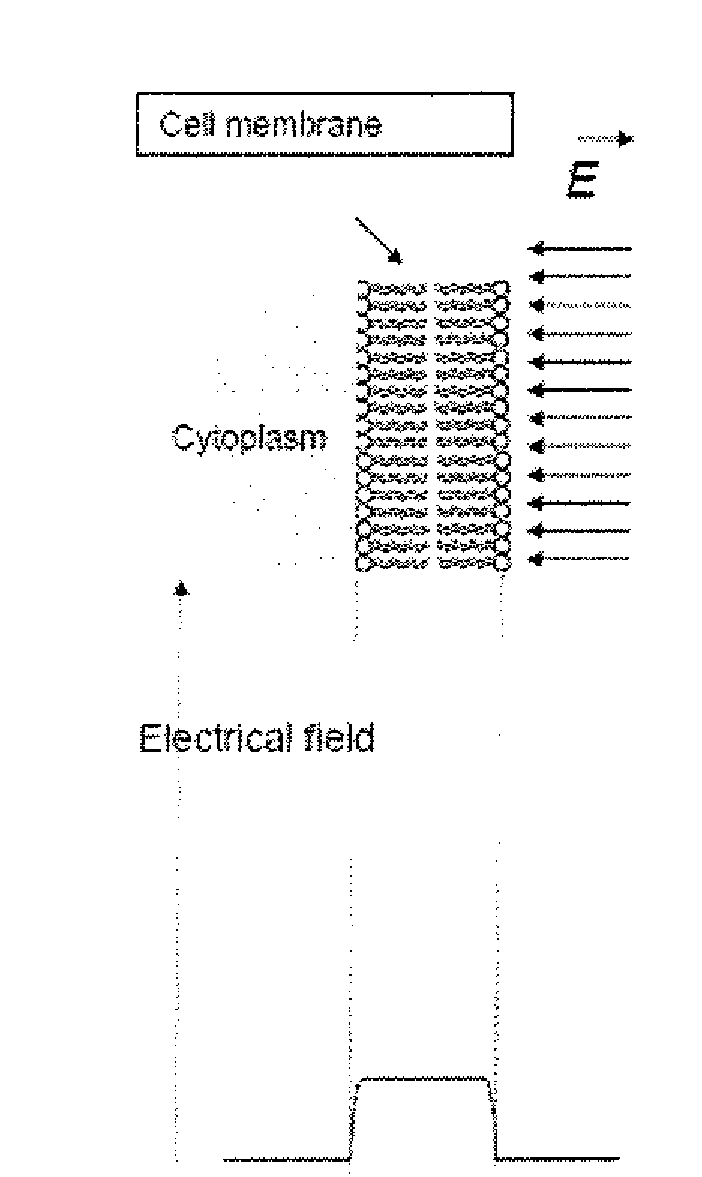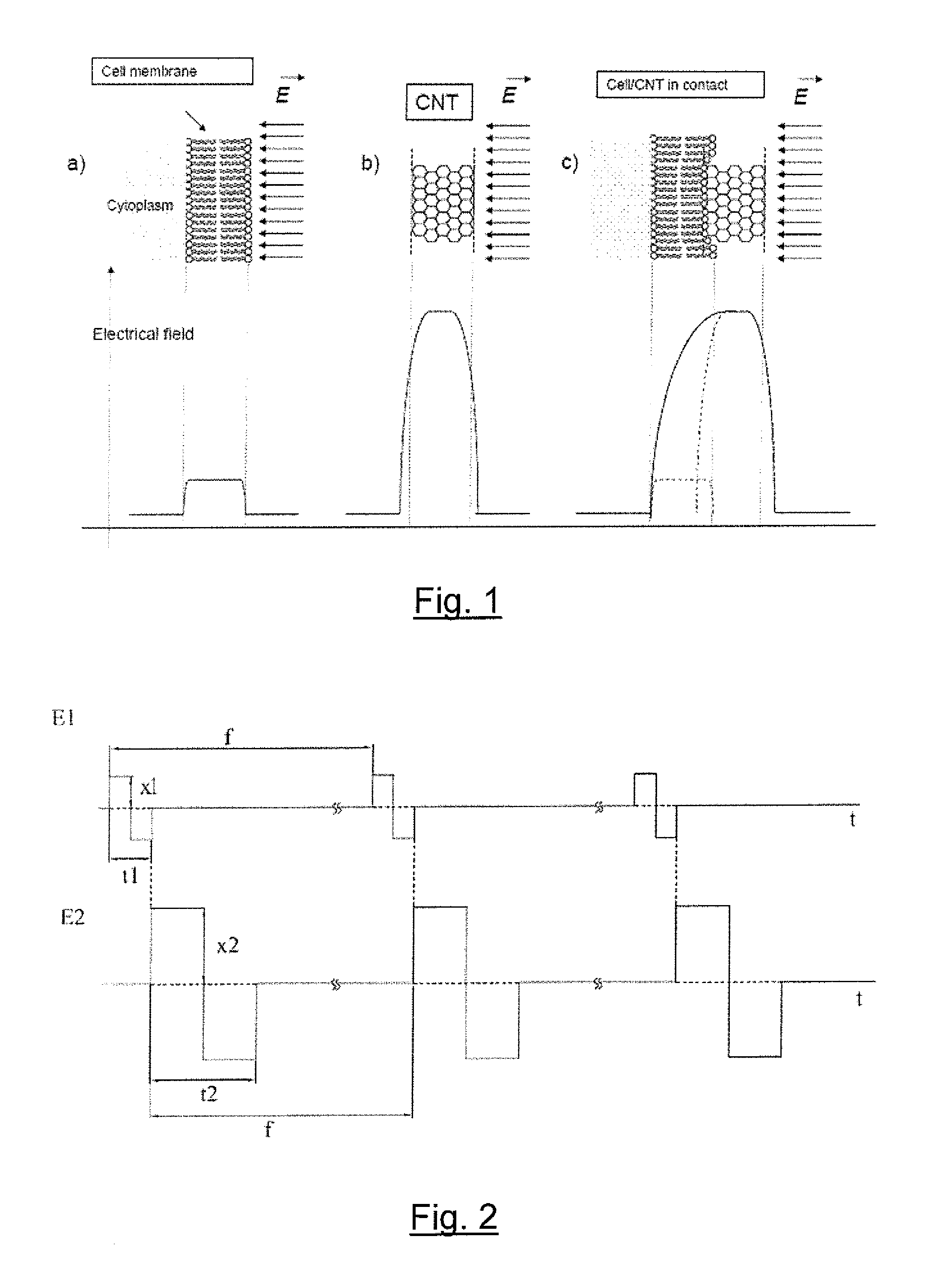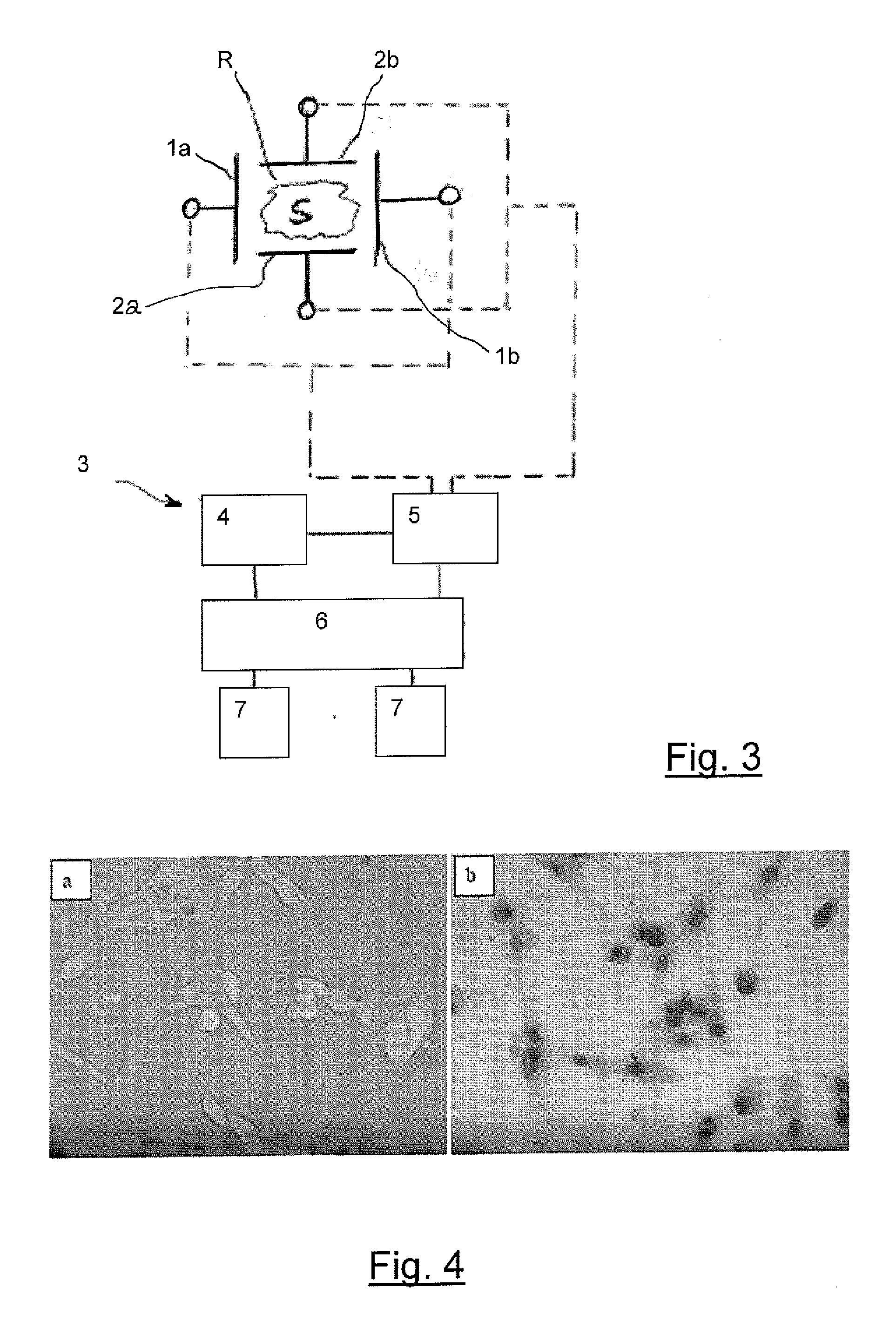Non invasive method of electroporation mediated by carbon nanotubes and device for putting the method into practice
a carbon nanotube and electroporation technology, applied in nanotechnology, biochemistry equipment and processes, biochemistry apparatus and processes, etc., can solve the problems of unsuitability for applications, limited and small portions, and inapplicability to any part of the human body
- Summary
- Abstract
- Description
- Claims
- Application Information
AI Technical Summary
Benefits of technology
Problems solved by technology
Method used
Image
Examples
example
[0066]The results of experimental tests performed on different cell lines (immortalised mouse neurons, fibroblasts of cat kidney, immortalised human neurons) show that, while without CNT the cells porate if exposed to an electric field of 200 V / cm with 6 pulses of 20 ms at the frequency of 1 Hz, in accordance with what is reported in literature (Liu et al., 2006, cit.), to electroporate the same cells with the method according to the invention with CNT a field of 35 V / cm is instead sufficient, the other conditions being the same.
[0067]The tests were performed as follows. An experimental set up was provided for performing tests in vitro composed of the following parts:[0068]microchip for electroporation formed by two pairs of electrodes,[0069]wave form generator,[0070]optical microscope,[0071]video system for image acquisition.
[0072]The microchip for electroporation consists of a double pair of electrodes coated by a thin film of transparent insulating material, made by common techni...
PUM
| Property | Measurement | Unit |
|---|---|---|
| pulse frequency | aaaaa | aaaaa |
| pulse frequency | aaaaa | aaaaa |
| pulse frequency | aaaaa | aaaaa |
Abstract
Description
Claims
Application Information
 Login to view more
Login to view more - R&D Engineer
- R&D Manager
- IP Professional
- Industry Leading Data Capabilities
- Powerful AI technology
- Patent DNA Extraction
Browse by: Latest US Patents, China's latest patents, Technical Efficacy Thesaurus, Application Domain, Technology Topic.
© 2024 PatSnap. All rights reserved.Legal|Privacy policy|Modern Slavery Act Transparency Statement|Sitemap



